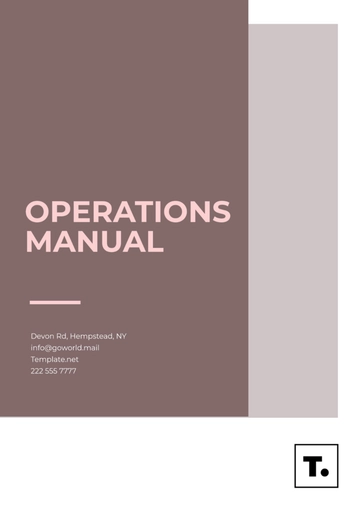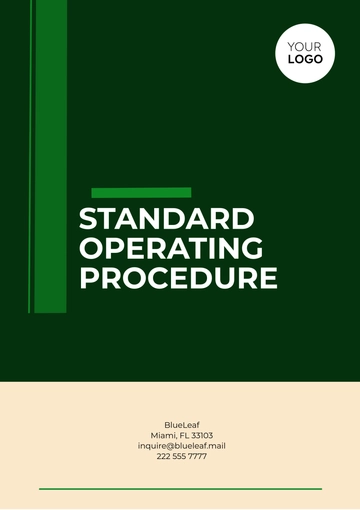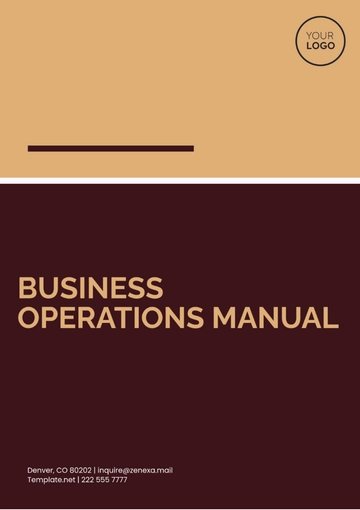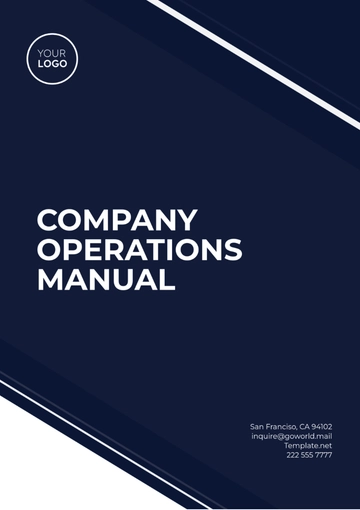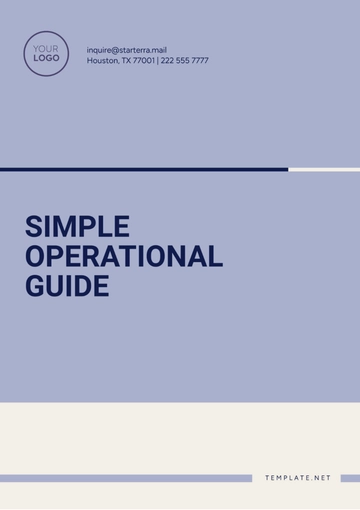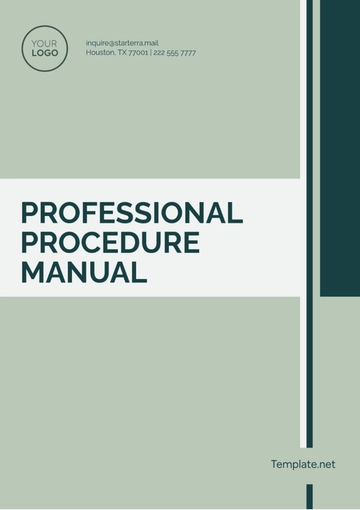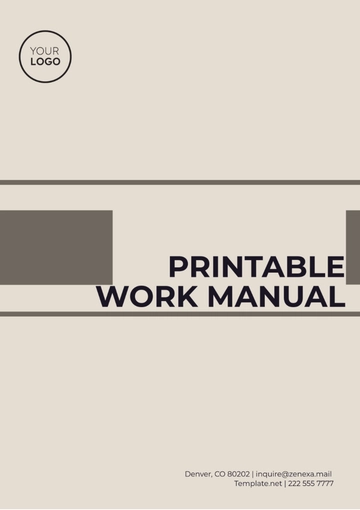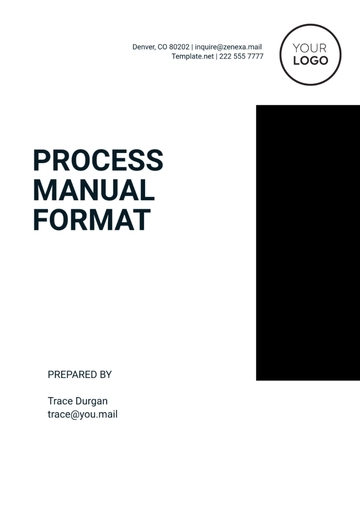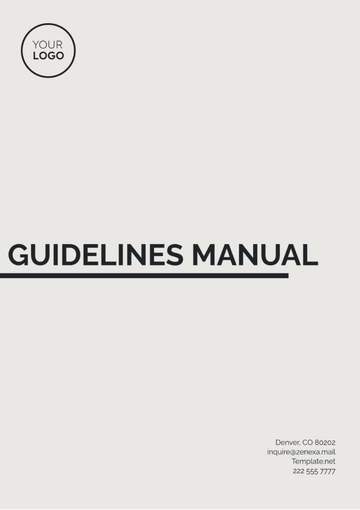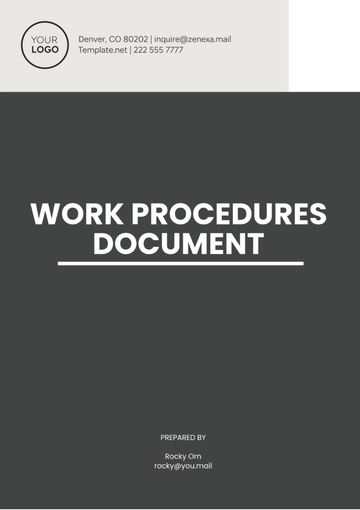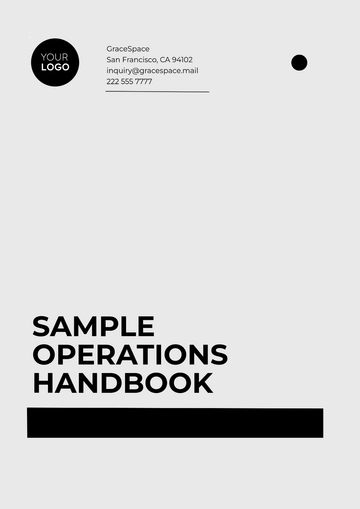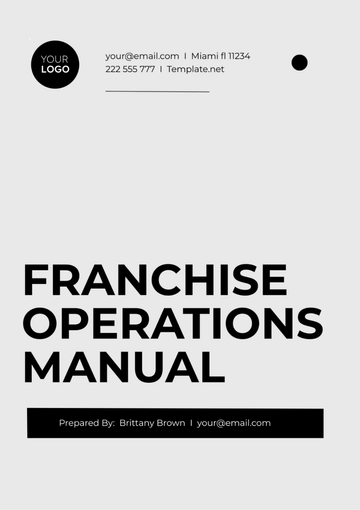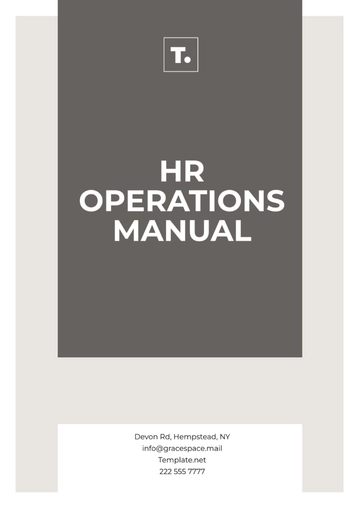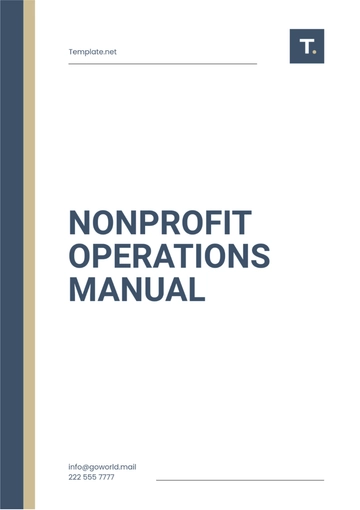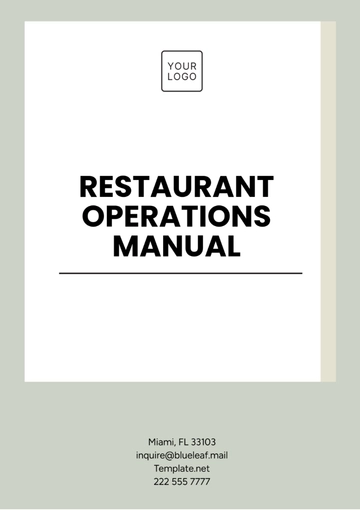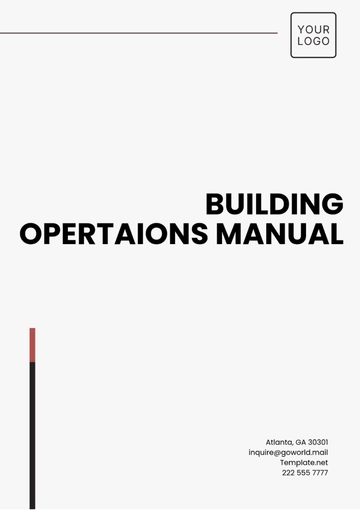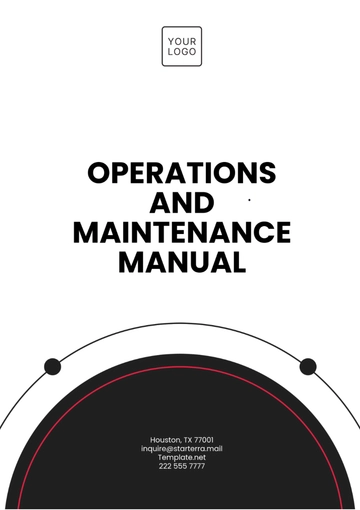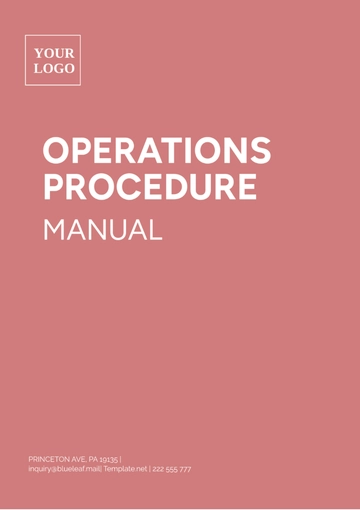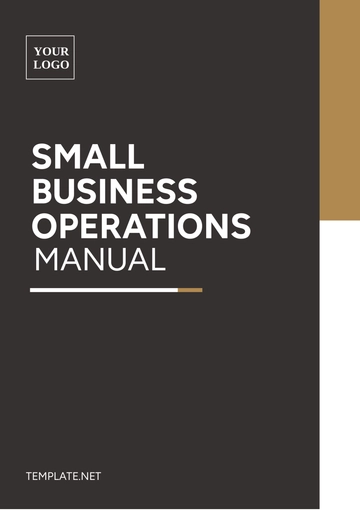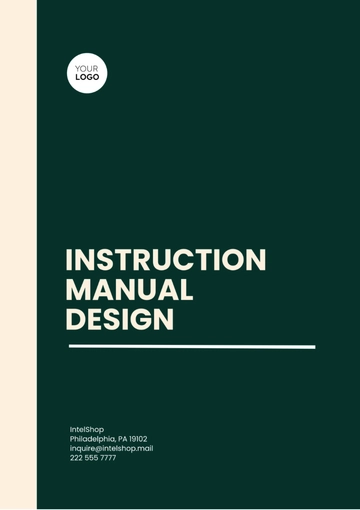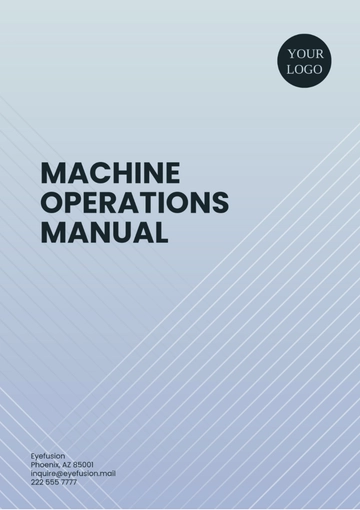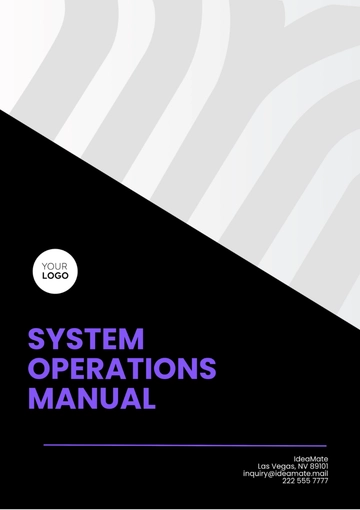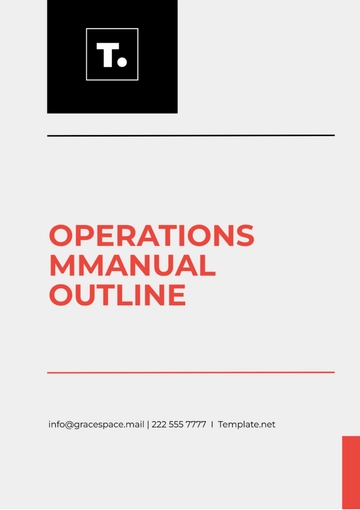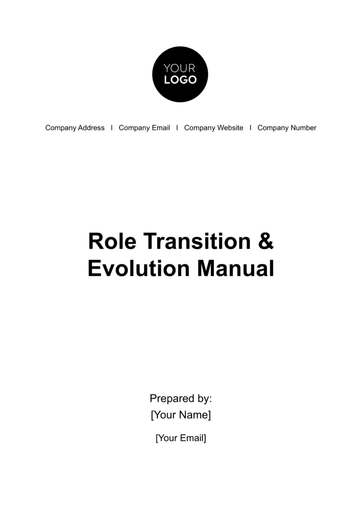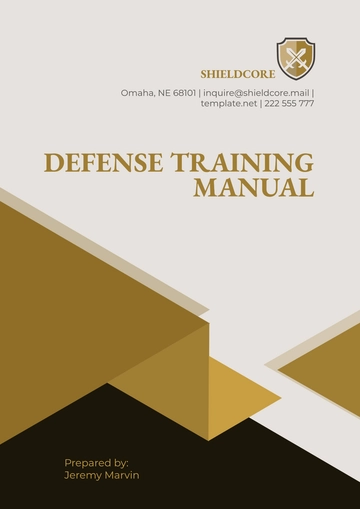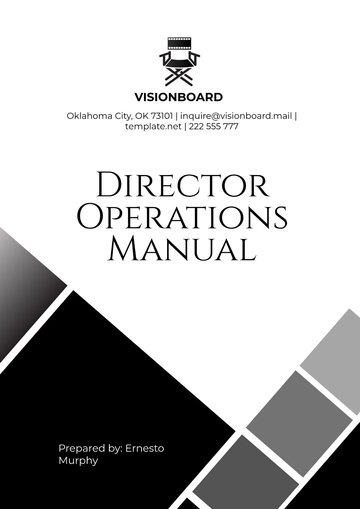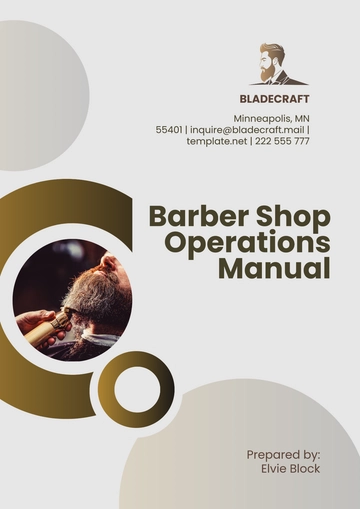Free Printable Grocery Store Training Manual

I. Introduction
A. Overview
Welcome to the [Your Company Name] Grocery Store Training Manual. This comprehensive guide is designed to provide new employees with the essential knowledge and skills required to perform their duties effectively. The manual covers various aspects of grocery store operations, including customer service, store policies, safety procedures, and product handling.
B. Purpose
The purpose of this manual is to:
Ensure consistency in employee training and performance.
Provide clear instructions and guidelines for daily operations.
Promote a safe and efficient work environment.
Enhance customer satisfaction and store efficiency.
C. Scope
This manual addresses:
Store operations and procedures.
Employee roles and responsibilities.
Customer service best practices.
Safety and emergency protocols.
Product knowledge and handling.
Store policies and regulations.
D. Audience
This manual is intended for:
New hires at [Your Company Name].
Existing employees needing a refresher on procedures.
Managers and supervisors for training purposes.
II. Store Operations
A. Store Layout and Organization
1. Store Zones
The grocery store is divided into several key zones:
Produce Section: Fresh fruits and vegetables. Employees are responsible for stocking, organizing, and maintaining the quality of produce.
Dairy Section: Milk, cheese, yogurt, and other dairy products. Ensure proper refrigeration and adherence to expiry dates.
Meat and Seafood: Fresh and packaged meats, as well as seafood. Follow hygiene and safety standards for handling.
Frozen Foods: Frozen vegetables, meats, and prepared meals. Regularly check and maintain freezer temperatures.
Grocery Aisles: Canned goods, dry foods, and non-perishables. Organize items by category and ensure shelves are stocked.
2. Store Fixtures and Equipment
Shelving Units: Adjustable shelves for various product sizes. Ensure shelves are clean and free of damage.
Point of Sale (POS) Systems: Cash registers and self-checkout kiosks. Familiarize yourself with POS operations and troubleshooting.
Refrigeration Units: Refrigerators and freezers for perishable items. Regularly check temperatures and report malfunctions.
B. Daily Store Operations
1. Opening Procedures
Unlocking and Preparing the Store: Arrive early to unlock doors, turn on lights, and prepare registers.
Checking Store Conditions: Inspect the store for cleanliness, restock as needed, and address any maintenance issues.
2. Closing Procedures
End-of-Day Cash Reconciliation: Count cash, reconcile with POS reports, and prepare deposits.
Cleaning and Restocking: Clean all areas, restock shelves, and secure the store.
C. Inventory Management
1. Stock Levels and Ordering
Monitoring Inventory: Regularly check stock levels and identify items that need replenishment.
Placing Orders: Follow the store's ordering system to replenish stock. Verify order accuracy upon delivery.
2. Receiving Shipments
Inspecting Deliveries: Check for damaged items and verify quantities against the order.
Storing Products: Properly store new inventory in designated areas, ensuring products are organized and accessible.
III. Employee Roles and Responsibilities
A. Front-End Staff
1. Cashiers
Operating the Register: Scan items, process payments, and issue receipts. Handle cash and electronic transactions accurately.
Customer Interaction: Greet customers, answer questions, and assist with bagging.
2. Customer Service Representatives
Handling Customer Queries: Address customer questions and concerns, providing solutions or directing them to appropriate personnel.
Managing Returns and Exchanges: Process returns and exchanges according to store policies.
B. Stock Clerks
1. Stocking Shelves
Shelf Organization: Arrange products neatly on shelves, facing labels forward for easy identification.
Restocking: Replenish items as needed and remove expired or damaged products.
2. Product Rotation
FIFO Method: Use the "First In, First Out" method to ensure older products are sold before newer stock.
Checking Expiration Dates: Regularly inspect products for expiry dates and remove expired items.
C. Store Managers
1. Supervising Staff
Scheduling: Create and manage employee schedules, ensuring adequate coverage during all shifts.
Training: Provide ongoing training and support to staff members, addressing performance issues as needed.
2. Managing Operations
Compliance: Ensure store operations comply with company policies and local regulations.
Reporting: Prepare reports on sales, inventory, and staff performance for upper management.
IV. Customer Service Best Practices
A. Greeting Customers
Friendly Interaction: Greet each customer with a smile and a warm welcome. Make them feel valued and appreciated.
Offering Assistance: Approach customers who look like they need help and offer assistance with finding products or navigating the store.
B. Handling Complaints
Listening and Empathizing: Listen carefully to customer complaints and express empathy. Acknowledge their concerns and reassure them that their issue will be addressed.
Providing Solutions: Offer practical solutions to resolve complaints, such as refunds, replacements, or discounts. Escalate issues to a manager if necessary.
C. Checkout Experience
Efficiency: Process transactions quickly and accurately to minimize wait times. Ensure that all items are scanned correctly and that prices match.
Bagging: Pack items carefully to prevent damage. Offer reusable bags if available and encourage customers to use them.
V. Safety and Emergency Protocols
A. General Safety Guidelines
1. Personal Safety
Proper Attire: Wear appropriate clothing and footwear for the work environment. Avoid wearing loose clothing or accessories that could get caught in equipment.
Ergonomics: Use proper lifting techniques to avoid injury. Bend at the knees and keep your back straight when lifting heavy items.
2. Workplace Safety
Cleanliness: Maintain a clean and organized work environment to prevent accidents. Promptly clean spills and address hazards.
First Aid: Be familiar with the location of first aid kits and know how to use basic first aid supplies.
B. Emergency Procedures
1. Fire Safety
Evacuation Plan: Know the store's fire evacuation plan and exit routes. Participate in regular fire drills.
Fire Extinguishers: Familiarize yourself with the location and use of fire extinguishers. Report any malfunctions immediately.
2. Medical Emergencies
Reporting Emergencies: Report medical emergencies to a manager or supervisor immediately. Provide assistance as needed and contact emergency services if necessary.
CPR and First Aid: Obtain CPR and first aid certification to be prepared for medical emergencies.
VI. Product Knowledge and Handling
A. Product Categories
1. Perishable Goods
Handling Procedures: Follow specific handling procedures for perishable items, including proper storage temperatures and hygiene practices.
Quality Checks: Regularly check for signs of spoilage or damage and remove any compromised items from the shelves.
2. Non-Perishable Goods
Storage: Store non-perishable items in a cool, dry place. Ensure that packaging is intact and free from damage.
Product Rotation: Rotate stock to ensure older items are sold first and minimize waste.
B. Handling Techniques
1. Proper Lifting
Body Mechanics: Use proper lifting techniques to avoid injury. Keep your back straight and lift with your legs.
Team Lifting: For heavy or bulky items, use team lifting techniques or equipment to assist with the lifting process.
2. Temperature Control
Refrigeration: Ensure that all refrigerated and frozen items are kept at the correct temperatures. Regularly check and document temperature readings.
Product Handling: Minimize the time perishable items spend outside of refrigeration to maintain freshness and safety.
VII. Store Policies and Regulations
A. Attendance and Punctuality
1. Scheduling
Shift Schedules: Follow assigned shifts and notify a manager in advance if you need to request time off or if you are running late.
Attendance Tracking: Record attendance accurately using the store's tracking system. Excessive absences or tardiness may result in disciplinary action.
2. Breaks and Meals
Breaks: Take breaks as scheduled and return promptly to your duties. Follow store policies regarding break durations and times.
Meals: Follow company guidelines for meal breaks and ensure that you are not consuming food or drink in unauthorized areas.
B. Dress Code
1. Uniforms
Required Attire: Wear the designated store uniform and adhere to grooming standards. Ensure that your uniform is clean and in good condition.
Name Tags: Always wear your name tag while on duty to facilitate customer interactions and improve service.
2. Personal Appearance
Grooming: Maintain personal hygiene and grooming standards to present a professional appearance. Avoid excessive jewelry or accessories that could interfere with work.
C. Conduct and Behavior
1. Professionalism
Customer Interaction: Display a positive and professional attitude in all interactions with customers and colleagues.
Work Ethic: Perform your duties to the best of your ability and contribute to a positive work environment.
2. Conflict Resolution
Addressing Issues: Address any conflicts or issues with colleagues or customers in a respectful and constructive manner. Seek assistance from a manager if needed.
Reporting Concerns: Report any serious concerns or incidents to a supervisor or HR department for further investigation.
VIII. Training and Development
A. Orientation Program
1. Initial Training
Introduction to Store Operations: Participate in an orientation program to familiarize yourself with store policies, procedures, and systems.
Hands-On Training: Receive hands-on training in various store functions, including cashier operations, stock management, and customer service.
2. Ongoing Development
Skill Enhancement: Engage in ongoing training opportunities to enhance your skills and knowledge. Participate in workshops and seminars as offered.
Performance Reviews: Regularly review your performance with a manager to identify areas for improvement and set goals for development.
B. Certification and Compliance
1. Required Certifications
Food Safety: Obtain necessary food safety certifications, such as ServSafe, to ensure compliance with health regulations.
Safety Training: Complete any required safety training, including first aid and CPR certifications.
2. Compliance Monitoring
Regulatory Compliance: Adhere to all local, state, and federal regulations related to grocery store operations. Participate in audits and inspections as required.
Policy Adherence: Follow all store policies and procedures as outlined in this manual. Report any non-compliance issues to a supervisor.
IX. Conclusion
A. Summary
This training manual serves as a comprehensive guide to understanding and performing your role effectively at [Your Company Name]. By adhering to the guidelines and procedures outlined here, you will contribute to a positive and efficient work environment.
B. Acknowledgement
Please acknowledge that you have received, read, and understood the contents of this manual by signing the acknowledgment form provided by your supervisor.
- 100% Customizable, free editor
- Access 1 Million+ Templates, photo’s & graphics
- Download or share as a template
- Click and replace photos, graphics, text, backgrounds
- Resize, crop, AI write & more
- Access advanced editor
Train staff effectively with the Printable Grocery Store Training Manual Template from Template.net. This editable tool offers a comprehensive format for training materials. Use our Ai Editor Tool to draft manuals covering procedures, policies, and job responsibilities, ensuring clear and consistent training for new and existing employees in your grocery store.
